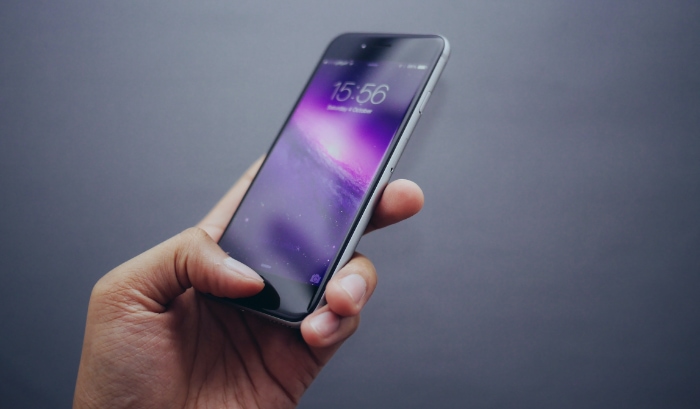What Does Extended Network Mean? Uncovered

Navigating the complex world of smartphone technology is no easy task, especially when it comes to understanding various network concepts. Among the most misunderstood is the idea of an ‘extended network.’ This term can frequently appear on your smartphone’s screen, but what does it truly mean? And how does it affect your smartphone usage?
As the globe becomes increasingly interconnected, network connectivity in our handheld devices plays a pivotal role. Yet, despite its importance, the concept of an extended network remains vague to many users.
This post aims to unravel the intricacies of an extended network, enhancing your comprehension of this feature and helping you get the most from your smartphone experience.
From basic network principles to the complex relationships between carriers, this blog will offer a thorough exploration of extended networks. So, fasten your seat belts as we dive into the fascinating world of smartphone connectivity and its far-reaching implications.
Unraveling the Basics of Network Concepts
Mobile networks are the bedrock of smartphone connectivity, facilitating everything from web browsing to video streaming. The two most prevalent types in recent years are 4G (Fourth Generation) and 5G (Fifth Generation) networks.
4G networks, also known as LTE (Long Term Evolution), brought about a significant leap in data transmission speeds and network capacity, enabling high-definition video streaming and seamless video calls. On the other hand, 5G networks, the most recent iteration, promise lightning-fast data speeds, near-instantaneous communication, and the capacity to connect a vast array of devices simultaneously.
Deciphering Key Terms: Cellular Network, Wi-Fi, and Data Roaming
It’s crucial to understand a few key terms to fully grasp the concept of an extended network.
Cellular Network: A cellular network is a communication network where the last link is wireless. It allows your smartphone to make calls, send text messages, and access internet services by connecting to cell towers spread across different geographical regions.
Wi-Fi: While it also facilitates internet access, Wi-Fi operates on a much smaller scale than a cellular network. It is typically used in localized environments such as homes, offices, or cafes, providing wireless access to a broadband connection.
Data Roaming: This is a term used when you are using another carrier’s network while traveling abroad or away from your carrier’s coverage area. Data roaming can incur additional charges, depending on your network provider’s policies.
The Importance of Network Understanding
By gaining an understanding of these terms and concepts, you’ll be better equipped to navigate your smartphone settings, understand your phone bill, and troubleshoot connectivity issues. This foundation is also essential for diving deeper into the concept of an extended network, as it builds upon these principles.
Decoding the Concept of the Extended Network
An extended network, in the context of smartphones, is essentially a collective term that refers to the coverage a user has access to, beyond the primary network provided by their carrier. This extension can occur through arrangements and agreements between different mobile network providers.
These agreements allow users to stay connected even when they’re outside their primary carrier’s network range, thereby “extending” their network coverage.
Functionality and Occurrence of the Extended Network
The extended network comes into play when you move outside of your carrier’s direct coverage area. For example, if you’re traveling in a remote area where your carrier doesn’t have a tower, but another carrier does, you could still get service.
Your phone will ‘roam’ onto the other network, and this is made possible because your carrier has an agreement with the other network. The specifics of these roaming agreements may vary, including data speeds and other features, but the general goal is to keep you connected.
Visualizing the Extended Coverage
Think of the coverage area as a map, where your primary carrier covers specific zones. However, there are certain zones outside of their reach.
That’s where the extended network comes in, filling these ‘gaps’ to ensure that your smartphone stays connected. It’s as if you have access to multiple carriers’ maps, and you can jump between these maps based on your geographical location.
Exploring the Role of Network Carriers in Extended Networks
Network carriers play a pivotal role in creating and maintaining extended networks. In this section, we will illuminate how carriers establish these networks through complex agreements and discuss what implications these partnerships have for you as a smartphone user.
The Intricacies of Inter-Carrier Agreements
Inter-carrier agreements form the basis of extended networks. These are contractual arrangements made between different network carriers that allow them to use each other’s network infrastructure.
They provide a framework that ensures mobile users maintain connectivity even when they are outside of their own carrier’s coverage area. The specifics of these agreements vary, but they generally involve a form of compensation between the parties involved, typically based on the volume of data, calls, and texts that users consume on the extended network.
Implications for Users
For users, the main benefit of these agreements is seamless, uninterrupted service. Whether you’re traveling domestically or internationally, these arrangements are designed to keep you connected.
However, the user experience may vary based on the specifics of the agreements. Some might offer high-speed data transfer on the extended network, while others may restrict you to lower speeds or limit certain services.
Therefore, understanding your carrier’s policy towards extended networks is crucial to manage expectations and avoid surprise charges.
Diverse Carrier Handling of Extended Networks
Each carrier handles extended networks in their own unique way. Some carriers have extensive extended networks, thanks to numerous agreements with other providers.
Others might have more limited extended networks, particularly smaller carriers or those in more remote areas. The user’s experience on the extended network, including factors like data speeds and call quality, will also vary depending on the carrier.
Therefore, when choosing a carrier, it’s worth investigating their coverage map, including their extended network, to ensure it aligns with your needs.
Bridging the Gap: Extended Networks and Your Smartphone

Now that we understand the concept of an extended network and the role carriers play, it’s time to bring your smartphone into the mix.
The Interaction of Smartphones with Extended Networks
Smartphones are designed to connect seamlessly to extended networks, provided your carrier has a roaming agreement in place with the network you’re trying to access. When you move outside your carrier’s coverage area, your phone will automatically search for a signal from another network it can use.
If there’s an agreement with another network in that location, your phone will connect to it, giving you access to the extended network. This process is generally automatic, requiring no manual input from the user.
Navigating Phone Settings Related to Extended Networks
While this process is typically automatic, there are settings on your smartphone that can influence how your device interacts with extended networks. For instance:
Data Roaming: This is typically an option in your phone’s network or cellular data settings. Turning it on allows your phone to connect to an extended network for data use when you’re out of your carrier’s coverage area. Keep in mind, though, that depending on your carrier’s policy, data roaming could incur additional charges.
Network Selection: Some smartphones allow you to manually select which network to connect to. This can be useful if your phone is having trouble connecting to an extended network automatically, but it’s typically best to leave network selection set to ‘Automatic’ for seamless transitions.
Wi-Fi Calling: This feature allows you to make calls and send texts over a Wi-Fi connection, which can be helpful if you’re in an area with poor cellular coverage but good Wi-Fi.
Understanding these settings and how they impact your phone’s interaction with extended networks can help you ensure you’re always connected while also managing potential costs.
The Double-Edged Sword: Advantages and Disadvantages of Using an Extended Network
As with most things, using an extended network comes with its own set of advantages and disadvantages.
The Upsides of Being on an Extended Network
The primary advantage of an extended network is the assurance of connectivity, no matter where you are. This provides a seamless user experience, allowing you to use your smartphone for calls, messaging, and data usage, even when you’re out of your carrier’s coverage area.
This advantage is particularly beneficial for those who travel frequently or live in areas with limited network coverage.
The Downsides and Potential Impacts
While an extended network can be a boon, there can be a few drawbacks. These primarily relate to the potential for additional costs and variations in service quality.
Costs: Depending on your carrier’s policies, using an extended network can sometimes incur additional charges, particularly for data usage. These fees can add up, especially if you’re a heavy data user.
Service Quality: While the goal of extended networks is to maintain connectivity, the quality of service can vary. You might experience slower data speeds or decreased call quality compared to your primary network.
Mitigating the Potential Issues
To mitigate these potential issues, it’s essential to familiarize yourself with your carrier’s extended network policies. If there are additional costs associated with using the extended network, consider adjusting your phone settings to limit data usage when connected to it.
Also, if you travel often or live in an area with limited primary network coverage, consider choosing a carrier with a robust extended network to ensure reliable service.
Conclusion
As we navigate through the complexities of network connectivity in the modern digital era, understanding the nuances of terms like ‘extended network’ becomes critical. Not only does it empower us to take full advantage of our smartphones, but it also helps us make informed choices about the carrier services we use.
The concept of an extended network, formed through the inter-carrier agreements, epitomizes the collaborative spirit in the telecommunications industry, all aimed at providing the best user experience. It ensures that we stay connected, regardless of geographical barriers, illustrating the technological advancements we’ve made in recent years.
However, as we’ve seen, it’s not without potential drawbacks. Understanding these, from additional costs to varying service quality, is key to managing expectations and avoiding any surprise charges.
Knowledge about our phone settings can also play a pivotal role in managing these potential pitfalls.
As we continue to rely heavily on our smartphones for an array of daily tasks, a comprehensive understanding of extended networks can help us remain connected, informed, and ready for what the ever-evolving tech landscape has to offer. With this knowledge in your hands, you are now equipped to navigate the world of network connectivity with confidence and finesse.



